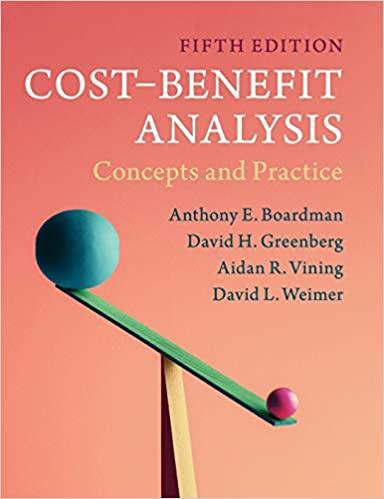Question
Part 1: Compute overhead and gross margin using traditional costing Per Unit Part 127 Part 234 Overhead/unit $12.83 $5.77 Gross Margin: Selling Price/unit $31.86 $24.00
Part 1: Compute overhead and gross margin using traditional costing
| Per Unit | Part 127 | Part 234 |
| Overhead/unit | $12.83 | $5.77 |
| Gross Margin: Selling Price/unit | $31.86 | $24.00 |
| Prime costs/unit | $9.53 | $8.26 |
| Overhead/unit | $12.83 | $5.77 |
| Gross margin/unit | $9.50 | $9.97 |
| Total | Part 127 | Part 234 |
| Total Profit | $4,752,156 | $996,844 |
Part 2: Select the best cost driver and compute overhead rates for each cost pool.
| Cost pool | Cost driver | Overhead rate |
| Setup costs | # of production runs | $800.00 |
| Material handling costs | Material moves | $1,00.00 |
| Machine costs | Machine hours | $9.00 |
| Receiving costs | Receiving orders | $1,500.00 |
| Engineering costs | Engineering hours | $150.00 |
| General plant costs | Direct labor hours | $2.00 |
Part 3: Compute overhead and gross margin using Activity-based Costing
| Per Unit | Part 127 | Part 234 |
| Overhead/unit | $7.14 | $34.19 |
| Gross Margin: Selling Price/unit | $31.86 | $24.00 |
| Prime costs/unit | $9.53 | $8.26 |
| Overhead/unit | $7.14 | $34.19 |
| Gross margin/unit | $15.19 | ($18.45) |
| Total | Part 127 | Part 234 |
| Total Profit | $7,593,852 | ($1,844,852) |
Part 4: increase in price for product 234 by 25%
| Per Unit | Part 127 | Part 234 |
| Selling Price/unit | $31.86 | $30.00 |
| Prime costs/unit | $9.53 | $8.26 |
| Overhead/unit | $11.65 | $11.65 |
| Gross margin/unit | $10.68 | $10.09 |
| Total | Part 127 | Part 234 |
| Total Profit | $5,340,000 | $1,009,000 |
Part 5: increase in price for product 127 by 20%
| Per Unit | Part 127 | Part 234 |
| Selling Price/unit | $38.23 | $24.00 |
| Prime costs/unit | $9.53 | $8.26 |
| Overhead/unit | $11.65 | $11.65 |
| Gross margin/unit | $17.05 | $4.09 |
| Total | Part 127 | Part 234 |
| Total Profit | $8,525,000 | $409,000 |
Part 6: part 127 & 234 by 15%
| Per Unit | Part 127 | Part 234 |
| Selling Price/unit | $36.64 | $27.60 |
| Prime costs/unit | $9.53 | $8.26 |
| Overhead/unit | $11.65 | $11.65 |
| Gross margin/unit | $15.46 | $7.69 |
| Total | Part 127 | Part 234 |
| Total Profit | $7,730,000 | $769,000 |
(1) Argue for the use of Activity-based Costing by in this case by:
a) Describing when Activity-based Costing is appropriate and when Traditional Costing is appropriate and when each is not appropriate to use.
b) Discussing what are the strengths and weaknesses of ABC? When is it appropriate to use? What kinds of business situations suggest the need for ABC?
c) Applying a &b to the case and arguing for an Activity-based Costing system.
(2) Describe the Activity-based costing system you are recommending. Include a justification for the cost driver selected.
(3) Present your new cost findings. Include both per unit and total cost data. There should be tables with cost information included.
(4) Make strategy recommendations for each product and for the plant. Use the cost and profit numbers to justify these recommendations.
(5) Comment on the validity of the plant managers concern that competitors are selling below the cost of making Part 127.
(6) Explain the apparent lack of competition for Part 234 and the customers response to potential price increase.
(7) Make any other additional recommendations or suggestions.
Step by Step Solution
There are 3 Steps involved in it
Step: 1

Get Instant Access to Expert-Tailored Solutions
See step-by-step solutions with expert insights and AI powered tools for academic success
Step: 2

Step: 3

Ace Your Homework with AI
Get the answers you need in no time with our AI-driven, step-by-step assistance
Get Started


